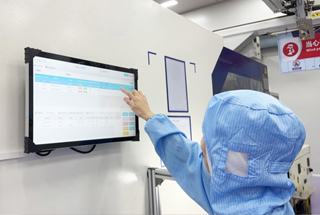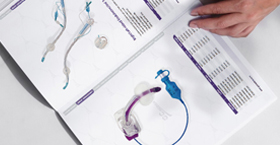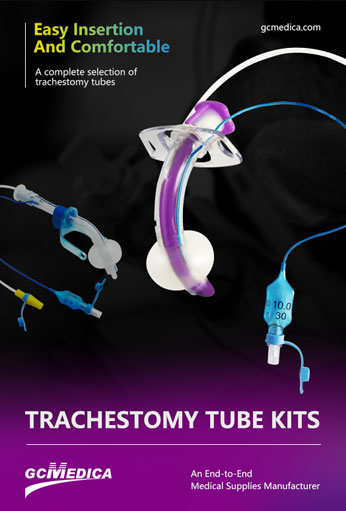Tracheostomy tubes play a pivotal role in securing the airway for patients across the lifespan—from neonates to the elderly—who require prolonged ventilatory support, protection against aspiration, or relief from upper airway obstruction. Proper tube sizing minimizes complications such as increased airway resistance, mucosal injury, and accidental decannulation. Selection involves matching internal diameter (ID), outer diameter (OD), and length to the patient’s age, size, and anatomical characteristics, as well as choosing between cuffed and uncuffed designs. Uncuffed tubes are generally preferred in younger patients to reduce tracheal wall pressure, while cuffed tubes may be indicated in older children and adults when positive-pressure ventilation or aspiration prevention is required.
Below is a summary table of commonly recommended tracheostomy tube sizes by age group. The ID and OD values are approximate and may vary slightly between manufacturers. Tube length should be confirmed clinically to ensure that the distal tip rests about 1.5–2 cm above the carina.
| Age Group | Recommended ID (mm) | Approximate OD (mm) | Typical Length (cm) | Cuff Type |
|---|---|---|---|---|
| Neonate (0–1 month) | 2.5 | 4.3 | 3.5 | Uncuffed |
| Infant (1–12 months) | 3.0 | 5.0 | 4.0 | Uncuffed |
| Toddler (1–3 years) | 3.5 | 5.7 | 4.5 | Uncuffed |
| Preschool (3–6 years) | 4.0 | 6.4 | 5.0 | Uncuffed or Cuffed |
| School‑Age (6–12 years) | 4.5 | 7.1 | 5.5 | Cuffed |
| Adolescent (13–17 yrs) | 5.0–6.0 | 7.8–8.5 | 6.0–6.5 | Cuffed |
| Adult (18–65 yrs) | 6.0–8.0 | 9.3–10.6 | 7.0–8.0 | Cuffed |
| Elderly (>65 yrs) | 6.0–7.5 | 9.3–9.9 | 7.0–7.5 | Cuffed |
When selecting a tube, clinicians must consider additional patient-specific factors such as body habitus, neck length, and any structural airway abnormalities (e.g., tracheal stenosis or tracheomalacia). In neonates and infants, the risk of pressure necrosis warrants uncuffed tubes, while cuffed tubes in older children and adults help maintain ventilation without significant air leak and protect against aspiration of secretions. Tube materials—typically medical‑grade PVC or silicone—balance flexibility with rigidity to maintain patency, and many tubes include removable inner cannulas for easy cleaning or rapid exchange in case of mucus plugging. Fenestrated tube options allow phonation in cooperative older children and adults but require careful monitoring to prevent granulation tissue formation.
Regular assessment and maintenance of the tracheostomy site and tube are essential. As patients grow or as their clinical condition evolves, periodic upsizing—often every 6–12 months in pediatric patients and as needed in adults—ensures optimal fit. Vigilance for complications such as obstruction, infection, or accidental decannulation, combined with adherence to age-appropriate sizing guidelines, underpins safe and effective long-term tracheostomy management across all age groups.
| Tracheostomy Tubes > |


 Français
Français Español
Español Products
Products

 About Us
About Us












